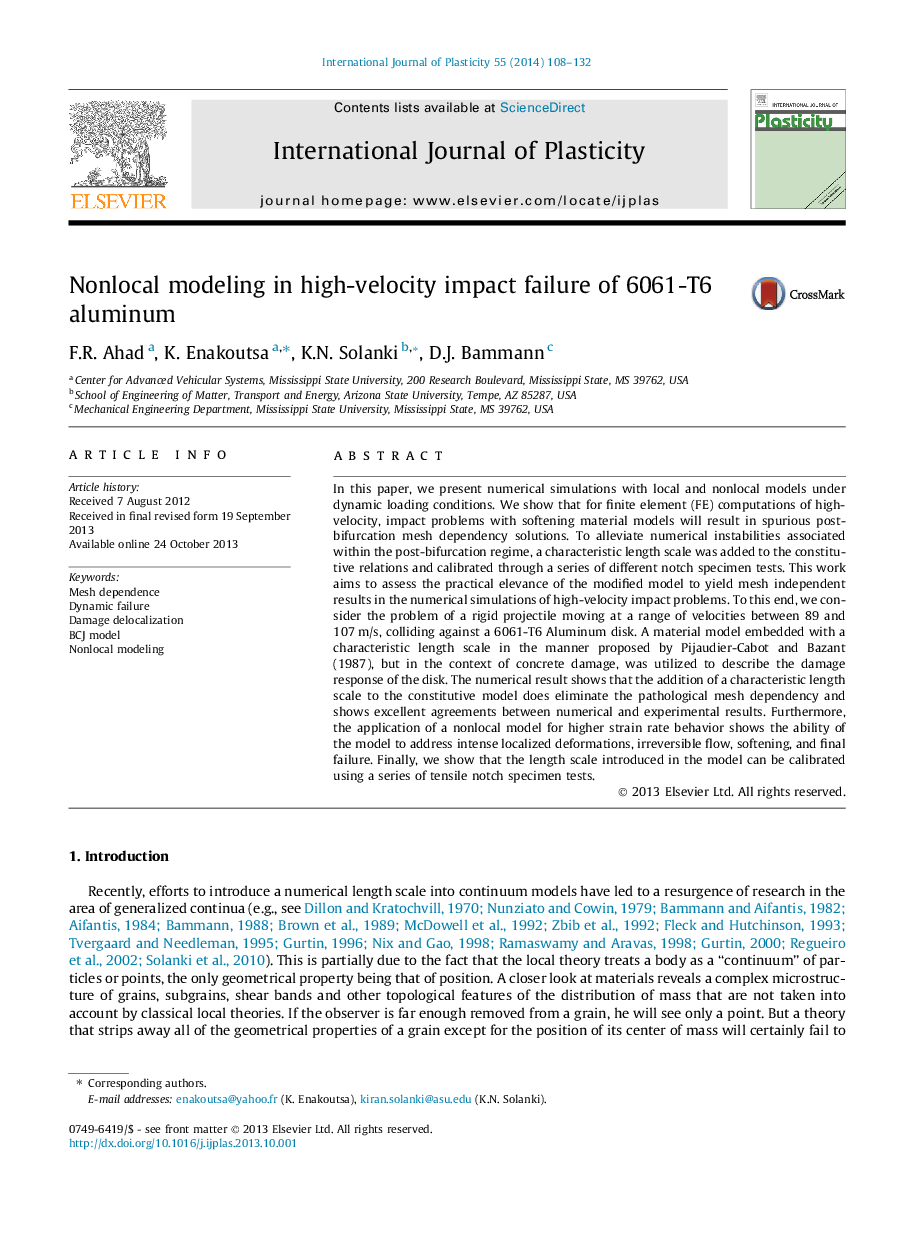| Article ID | Journal | Published Year | Pages | File Type |
|---|---|---|---|---|
| 786807 | International Journal of Plasticity | 2014 | 25 Pages |
•The present study establishes the relevance of the nonlocal concept to deal with high rate damage phenomena.•Process of calibrating nonlocal characteristic length scale using a series of tensile notch specimen tests.•Numerical result shows that the addition of a length scale to the model does eliminate the pathological mesh dependency.•In addition the numerical predictions of the new model are in good agreement with experimental data.
In this paper, we present numerical simulations with local and nonlocal models under dynamic loading conditions. We show that for finite element (FE) computations of high-velocity, impact problems with softening material models will result in spurious post-bifurcation mesh dependency solutions. To alleviate numerical instabilities associated within the post-bifurcation regime, a characteristic length scale was added to the constitutive relations and calibrated through a series of different notch specimen tests. This work aims to assess the practical elevance of the modified model to yield mesh independent results in the numerical simulations of high-velocity impact problems. To this end, we consider the problem of a rigid projectile moving at a range of velocities between 89 and 107 m/s, colliding against a 6061-T6 Aluminum disk. A material model embedded with a characteristic length scale in the manner proposed by Pijaudier-Cabot and Bazant (1987), but in the context of concrete damage, was utilized to describe the damage response of the disk. The numerical result shows that the addition of a characteristic length scale to the constitutive model does eliminate the pathological mesh dependency and shows excellent agreements between numerical and experimental results. Furthermore, the application of a nonlocal model for higher strain rate behavior shows the ability of the model to address intense localized deformations, irreversible flow, softening, and final failure. Finally, we show that the length scale introduced in the model can be calibrated using a series of tensile notch specimen tests.
